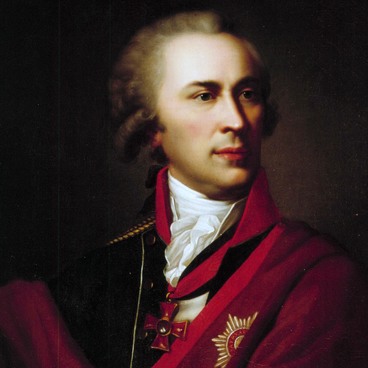Ivan Dryapachenko, a talented painter, graphic artist, portraitist, educator and a master of landscape and genre painting, was born in 1881 in the Ukrainian village of Vasylivka. He had his first art lessons from 1894 to 1898 in Kiev Drawing School led by artist Mykola Murashko. After his graduation he studied in the studio of Valentin Serov as an external student. He studied at the Imperial Academy of Arts from 1903 to 1911. His educators in Petersburg were eminent artists, such as the great Russian realist Ilya Repin, history painter Vasily Savinsky, and master of portraiture and genre painting Pavel Chistyakov.
In 1912 and then in 1913, Dryapachenko traveled to Italy to practice his craft and received the prestigious award named after A.I. Kuindzhi for his painting The Holy Family. In 1914 and 1915, he lived in his homeland and painted a lot of works dedicated to the lives of ordinary people. During the years of the First World War, he served among the war artists of the Trophy Commission – his duties included sketching the battlefield and painting portraits of supreme leaders of the Russian army as well as the holders of St. George Cross. In 1918, the painter permanently settled in his homeland. During that time, his name dropped out of sight of capital’s art critics and he became nearly forgotten.
The most expressive paintings of Dryapachenko are the ones depicting urban landscapes in evening lighting. One of these works is Twilight painting: it was presumably finished in 1916. This work is executed in an Impressionist manner, as it includes expressive colors to depict electric light flashes and the shimmering windows of passages and high-rise buildings. This could possibly be showing a nighttime cityscape in Europe, but it could also be depicting Moscow, Petersburg or Kiev prior to the huge historical upheavals.
Dryapachenko did social-realistic paintings in his final years. In the 1930s, he painted a genre scene involving Vladimir Lenin, as well as depicted the work of the first combines and ordinary Ukrainians during beet weeding. The painter died in 1936 in his home village, Vasylivka. Contemporaries claim that he died during a fire caused by an oil lamp.
In 1912 and then in 1913, Dryapachenko traveled to Italy to practice his craft and received the prestigious award named after A.I. Kuindzhi for his painting The Holy Family. In 1914 and 1915, he lived in his homeland and painted a lot of works dedicated to the lives of ordinary people. During the years of the First World War, he served among the war artists of the Trophy Commission – his duties included sketching the battlefield and painting portraits of supreme leaders of the Russian army as well as the holders of St. George Cross. In 1918, the painter permanently settled in his homeland. During that time, his name dropped out of sight of capital’s art critics and he became nearly forgotten.
The most expressive paintings of Dryapachenko are the ones depicting urban landscapes in evening lighting. One of these works is Twilight painting: it was presumably finished in 1916. This work is executed in an Impressionist manner, as it includes expressive colors to depict electric light flashes and the shimmering windows of passages and high-rise buildings. This could possibly be showing a nighttime cityscape in Europe, but it could also be depicting Moscow, Petersburg or Kiev prior to the huge historical upheavals.
Dryapachenko did social-realistic paintings in his final years. In the 1930s, he painted a genre scene involving Vladimir Lenin, as well as depicted the work of the first combines and ordinary Ukrainians during beet weeding. The painter died in 1936 in his home village, Vasylivka. Contemporaries claim that he died during a fire caused by an oil lamp.

